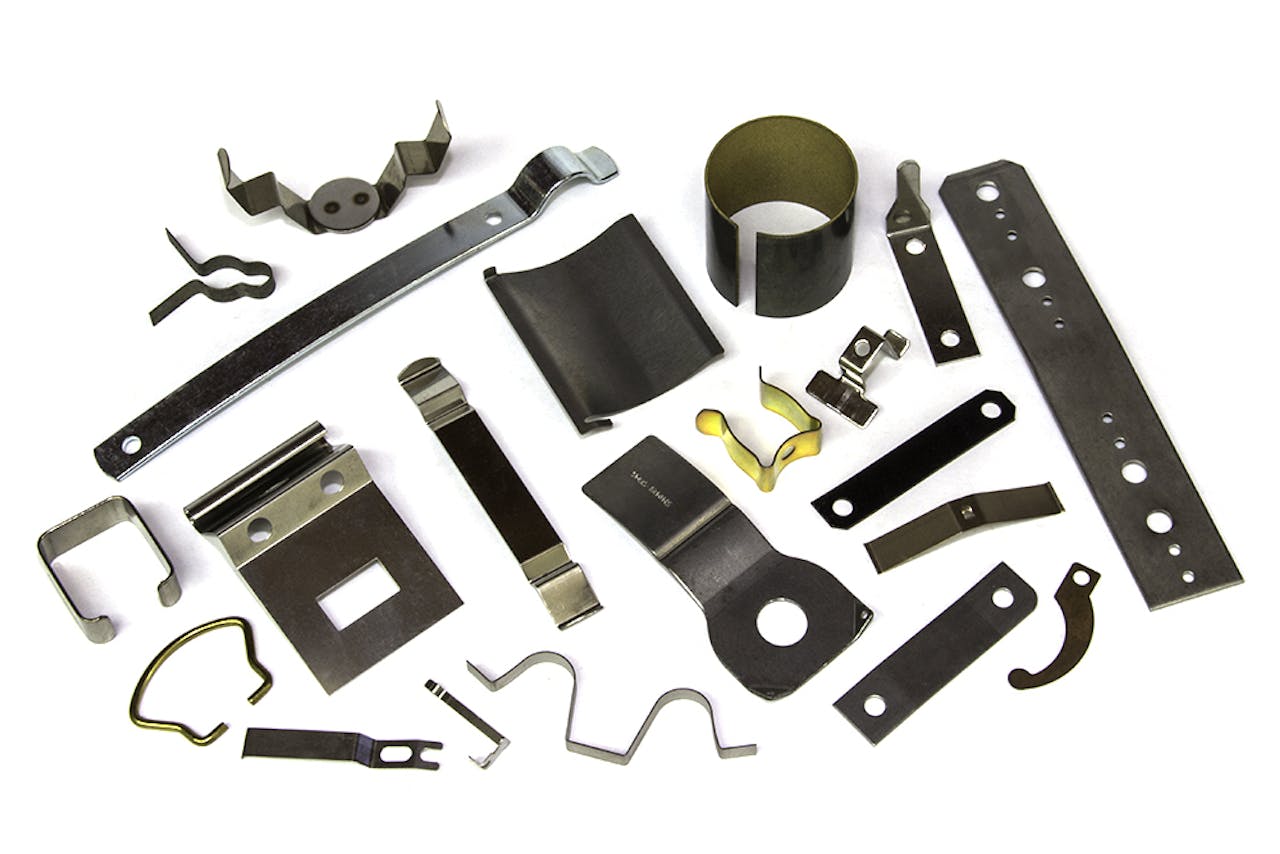The Development of Metal Marking Processes: Innovations and Applications
The world of metal stamping processes has actually seen a transformative trip marked by constant technology and adaptation to meet the needs of contemporary commercial techniques. From the traditional methods deeply rooted in background to the advanced innovations driving high-speed accuracy, the development of metal marking has been absolutely nothing except amazing. As brand-new tooling methods and automation locate their method right into this industry, the effects for effectiveness and top quality are extensive. The applications span throughout a spectrum of industries, each profiting distinctively from the improvements in metal stamping procedures.
Standard Steel Marking Techniques
Conventional steel marking methods have actually long been the structure of making procedures in various markets because of their performance and precision. The process includes developing a steel sheet or coil right into a wanted form by pushing it between a die and a punch. This method is widely used for creating big quantities of components with high precision at a rapid pace.
One of the key advantages of conventional metal stamping techniques is the ability to maintain limited resistances, ensuring that each component fulfills the required specs constantly. This degree of precision is crucial in sectors such as auto, aerospace, and electronic devices, where also small variances can cause considerable issues.
Moreover, conventional metal marking methods provide affordable services for automation contrasted to various other manufacturing methods. The capacity to stamp components in quick succession reduces production time and lowers labor prices, making it an eye-catching choice for companies wanting to maximize their production procedures.
Appearance of High-Speed Stamping

Among the essential benefits of high-speed stamping is its capacity to maintain precision and uniformity even at accelerated processing rates. This precision is vital in industries where tight resistances and elaborate layouts are required. Furthermore, high-speed marking permits the handling of a vast array of products, including light weight aluminum, stainless-steel, and copper, additional increasing its applicability across different fields.
Furthermore, the development of high-speed marking has allowed suppliers to meet the growing demand for intricate parts in industries such as vehicle, aerospace, and electronic devices (Metal Stamping). By leveraging the speed and accuracy of high-speed stamping innovation, firms can boost their competition in a swiftly developing market landscape
Improvements in Tooling Modern Technology
With the evolution of high-speed stamping allowing improved accuracy and performance in metal forming processes, the field of metal stamping has seen significant advancements in tooling innovation. Tooling innovation plays an essential role in metal stamping procedures, affecting variables such as item quality, manufacturing rate, and total cost-effectiveness. One crucial innovation in tooling modern technology is the growth of smart tooling systems that include sensing units and keeping an eye on gadgets to supply real-time data on the stamping procedure. These systems can identify concerns such as device wear or misalignment, enabling for immediate adjustments to keep ideal performance.
Furthermore, innovations in products scientific research have brought about the development of tooling materials with improved toughness, use resistance, and thermal conductivity. By making use of these sophisticated products, tooling suppliers can generate dies and molds that endure the high pressures and temperature levels associated with metal marking processes, leading to longer device life and enhanced production effectiveness. In addition, technologies in tool layout, such as the use of simulation software and additive production methods, have made it possible for the development of intricate tooling geometries that were previously challenging to generate. In general, these improvements in tooling technology have great post to read actually transformed the steel marking industry, enabling suppliers to achieve higher degrees of accuracy, productivity, and expense financial savings.
Combination of Automation in Marking
As automation proceeds to improve the landscape of steel marking processes, the combination of automated systems has ended up being progressively common in contemporary manufacturing facilities. Automated systems offer numerous benefits in steel marking, consisting of raised performance, enhanced accuracy, and enhanced safety. By incorporating automation right into marking processes, makers can minimize cycle times, reduce material waste, and maximize manufacturing throughput.
Among the essential parts of automation in marking is making use of robot arms for tasks such as product handling, component manipulation, and quality inspection (Metal Stamping). These robot systems can do repetitive and labor-intensive jobs with speed and accuracy, liberating human drivers to concentrate on more complex operations. Furthermore, automation permits real-time tracking and adjustment of marking processes, causing greater general procedure control and quality control
Additionally, the assimilation of automation in stamping makes it possible for makers to accomplish regular part high quality, meet tight resistances, and enhance general performance. As innovation remains to advancement, the function of automation in steel stamping processes is anticipated to increase better, driving advancement and efficiency Recommended Site in the manufacturing sector.
Applications Throughout Diverse Industries
Incorporating steel marking procedures across varied sectors showcases the flexibility and versatility of this production technique. From automobile to aerospace, electronic devices to clinical tools, metal stamping plays an essential function in the manufacturing of a large range of components. In the automobile sector, steel stamping is made use of to develop elaborate components such as body panels, chassis components, and engine components with high accuracy and efficiency. The aerospace industry depends on steel stamping for producing light-weight yet resilient parts for aircraft and spacecraft. In the electronic devices industry, steel stamping is crucial for generating ports, contacts, and various other tiny components with limited resistances. Clinical tool makers make use of steel marking for creating accurate parts find out like medical instruments and implants. Furthermore, the home appliance market benefits from steel marking procedures to make parts for refrigerators, washing machines, and various other house devices. The flexibility of steel marking processes makes it an important manufacturing strategy throughout different markets, demonstrating its significance in modern manufacturing procedures.
Final Thought

Comments on “Boost Your Manufacturing Quality with State-of-the-Art Metal Stamping Providers”